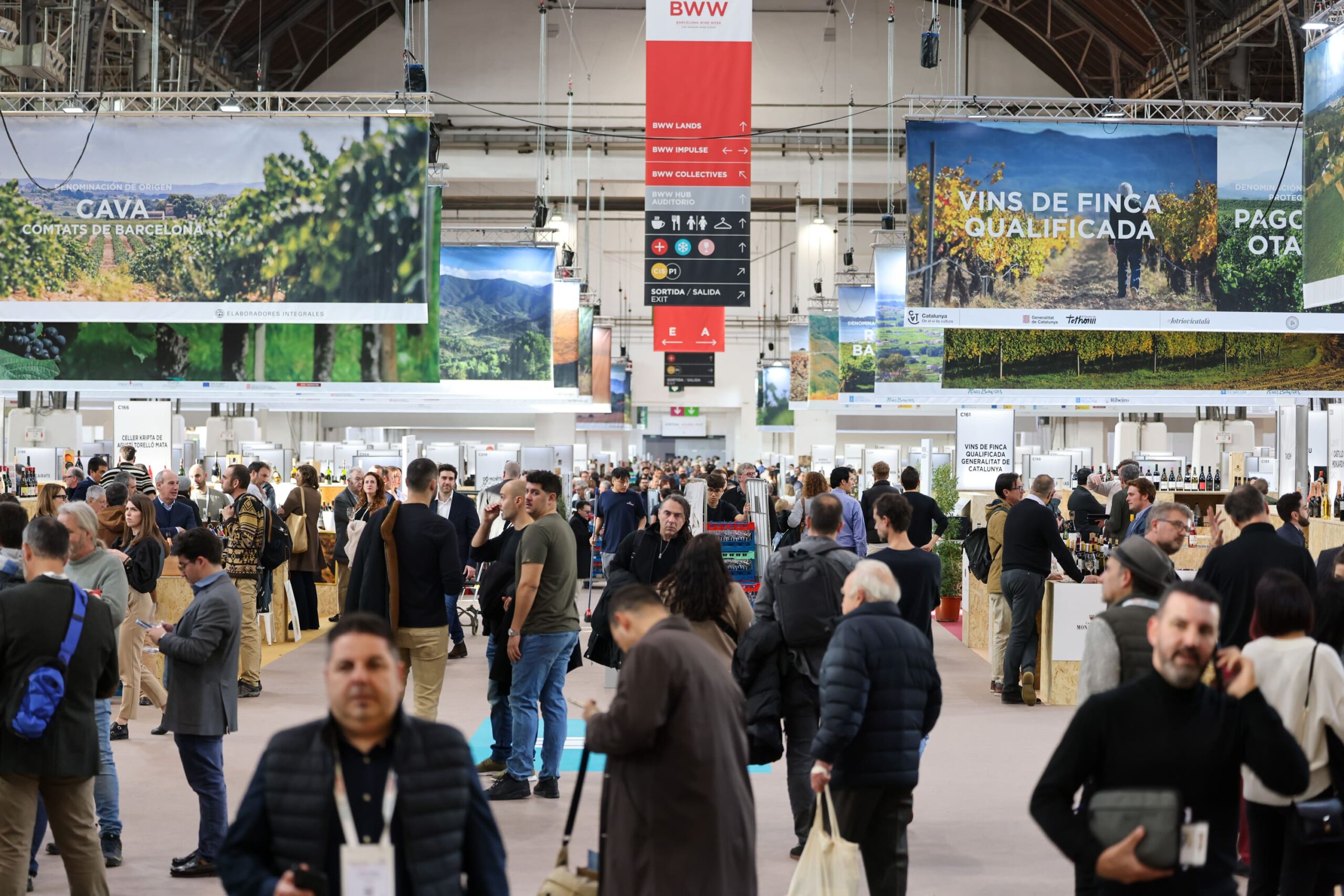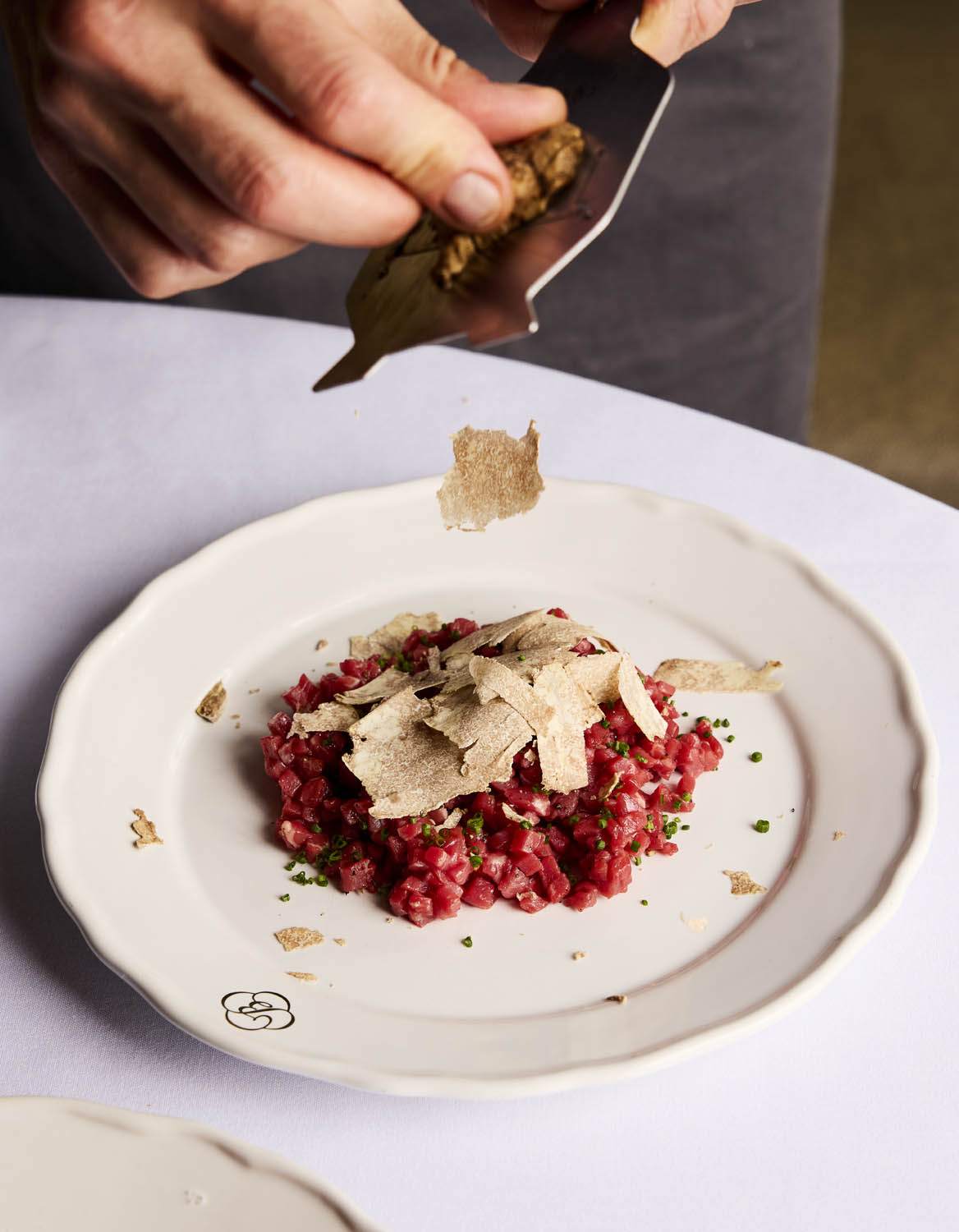Pyramid Selling
Can the cachet of Bordeaux’s top châteaux be exploited to create brands with true mass appeal? asks Andy Knott
THE DRINKS BUSINESS is a mine of information, not to mention a modern one. And modern means interaction.
So here’s a question for you. Of the seven wonders of the world, which is the only one remaining? For those of you unsure of the seven wonders of the world (I had to look them up on the internet), they are: the Temple of Artemis at Ephesus, the Hanging Gardens of Babylon, the Mausoleum at Halicarnassus, the Pharos Lighthouse of Alexandria, the Great Pyramid of Giza, the Colossus of Rhodes and the Statue of Zeus at Olympia.
Here’s some clues. The one that remains is 250 metres long on each side, 150m high, is composed of 2.3 million blocks of stone averaging 2.5 tons in weight. It maintained its status as the tallest building in the world right up to the nineteenth century when it reached the ripe old age of 4,500 years.
Its construction took no less than 20 years involving a toiling, perspiring mass of 100,000 slaves. We are, of course, talking about the Great Pyramid of Khufu, at Giza, Egypt.
It is not only literally that pyramids persist, permeate and pervade, but metaphorically too. Max Weber may be best remembered for unearthing the cultural import of the Protestant work ethic, but arguably of equal or greater importance was his prophecy of increasing stratification and bureaucratisation.
This "pyramidisation"‚ has occurred not only on both social and political levels, but also at an economic one and increasingly at a sales level, too. Gallo is perhaps the prime example of the base upwards‚ pyramid of the wine world.
The company commenced commercial activity with Ernest & Julio Gallo (currently in the process of being refreshed to Ernest & Julio Gallo Sierra Valley, to emphasise its Californian roots), an entry level range that achieved unenviable channels of distribution.
Subsequently, Gallo has expanded upwards with ranges such as Turning Leaf, Coastal Vineyards and finally, at the apex of the pyramid, the Sonoma Single Vineyard range. Similarly, many of the top performing wine brands have pursued such a route.
Of the successful Australians, Jacob’s Creek and Hardys both spring immediately to mind. These pyramids are, however, flattened‚ or squashed‚ in the sense that the base predominates, and there are not too many leaps to the top.
Penfolds would be the ideal illustration of a stretched‚ high pyramid; a classic ladder-brand with carefully delineated, multiple steps up the pricing scale involving dozens of wines.
Whichever way the pyramid is formed, however, this base upwards approach appears to be the business plan du jour in the world of wine brand building, and has been perfected over the last decade or two by producers in the New World.
So where does this leave the Old World? The Old World’s historical evolution is, of course, radically different to the New.
With such a rich tapestry of established, laudable, iconic wines perhaps there exists a whole host of opportunities to work downwards from this apex, by creating a top downward‚ pyramid.
The strategy would be to use the undoubted appeal of prestige and status associated with the top châteaux wines to create a brand with mass distribution and appeal.
In other words, via diffusion ("the act of diffusing, or the state of being diffused; a spreading; extension; dissemination; circulation; dispersion‚" Websters English Dictionary).
The example par excellence of a diffused range is the Mouton stable. Mouton Rothschild was created in 1853 when Baron Nathaniel de Rothschild purchased the then Château Brane-Mouton and renamed it.
Way back as far as the 1930s, a supplementary wine had been created: Mouton Cadet (cadet‚ in French is the junior of the family). Originally this was Rothschild’s second wine, a place currently held by Le Petit Mouton de Mouton Rothschild.
Subsequently, it has slipped down the Bordeaux quality scale moving from a Pauillac/St-Estèphe blend through generic Mèdoc to its current guise encompassing the whole of Bordeaux. It is now the world’s leading Bordeaux AOC brand.
Presently, there are many tiers to the Rothschild pyramid. By 1997, it had branched out beyond Bordeaux in France, creating the varietal-based Cadet range produced in Pays d’Oc, comprising a Cabernet, Chardonnay, Merlot and Sauvignon.
The Mouton cachet has been spread far and wide, with partnerships in the Americas, most notably Opus One in Napa Valley and Almaviva in Chile. Further up the scale from Mouton Cadet, there is the Baron Philippe Collection, based around the classic appellations of Bordeaux.
Mouton Cadet’s slide down the Bordeaux quality level scale, paradoxically presented it with the opportunity to create a reserve wine in 1996, at the level above, hailing from Mèdoc and Graves.
The Mouton Cadet brand has achieved considerable growth, quadrupling sales since 1975; global sales have now breached the million case point, standing at highly significant 13 million bottles per annum.
The two most high profile châteaux to have followed Mouton’s diffusion initiative are Lynch-Bages with Michel Lynch and Cos d’Estournel with Maitre d’Estournel and, relatively recently, Bordeaux d’Estournel.
Michel Lynch was introduced to the market in 1988 by Jean- Michel Cazes. "The rationale behind Michel Lynch was to capture the essence and character of Bordeaux while offering consumers high quality and affordable wines," explains export manager, Jean-Charles Cazes.
"While being a modern, fruitforward Bordeaux, capturing consumers’ desire for accessible wines, it was perceived as a gateway to the world of fine wine that Bordeaux’s reputation is based around."
With a 60%/40% red/white split, the brand currently shifts 100,000 cases in 30 export markets, with Ireland, Japan, the UK and the US the main destinations.
Alongside the Bordeaux red/white/rosé blends, the Cazes family has broken Bordeaux’s unwritten rule by introducing varietal wines to the range in Cabernet Sauvignon, Merlot and Sauvignon Blanc format.
Echoing Mouton Cadet’s move, this year will see the introduction of a reserve range, with a generic Bordeaux red and Graves white, the aim of which will be to provide a more structured and oaky style.
Activity under the Lynch banner will remain strictly within the confines of Bordeaux. "The Lynch family name is so deeply rooted in Bordeaux history, we find it hard to be legitimate while producing a wine under our name from another appellation," insists Cazes.
Partner Content
The recently purchased La Livinière estate in Minervois will retain its name, but the strategy is to diffuse a branded range (at differing price points) downwards from the top estate wine. Jean-Charles Cazes is insistent that the Michel Lynch brand has been carefully positioned away from the parent wine.
Recent research conducted on Michel Lynch has confirmed this distance between the branded and châteaux wines. Cazes says only a "small" percentage of Michel Lynch customers had heard of Château Lynch Bages.
"The clear conclusion was that Michel Lynch and Château Lynch Bages belong to two totally different markets, and therefore it is more important to focus on the brand’s own identity than on a potential halo effect inherited from the Grand Cru," concludes Cazes.
The undoubted star of St-Estèphe, Cos d’Estournel’s entry into the branded sector pre-dated Michel Lynch by a decade, with the arrival of Maitre d’Estournel in 1978. Its underlying principle was to use the credentials of the château to create a classic Bordeaux-style brand available to the wider wine-drinker.
Subsequently in 1999, a further addition was introduced at a lower tier to Maitre with Bordeaux d’Estournel. This was a reaction to changing consumer tastes, and the impact of the New World in particular.
General manager, Jean-Guillame Prats describes the wine as a "much more modern, warmer style with fuller, riper fruit".
Maitre and Bordeaux d’Estournel combined currently command 100,000 case sales globally. Like Michel Lynch, Prats is careful to keep the branded and châteaux wines discrete in terms of presentation and communication to the market.
"We take many measures to ensure that these are two separate products for entirely different markets.
According to the feedback we have, consumers don’t make the link between our branded offerings and Cos d’Estournel," offers Prats. "What’s undoubted is that the trade and commercial buyers do.
So, the association has certainly served as an aid to penetrate markets, but once it has arrived it’s up to the brand itself to prove its value and worth at its respective price points."
The Estournel name will also remain firmly entrenched within Bordeaux, and will not be used in the likes of Languedoc or beyond. Prats insists: "It would neither be fair to Bordeaux nor the consumer, and would only serve to cause confusion."
Even at the representative level, the scepticism towards the diffusion principle holds sway. "Mouton Cadet was created 70 years ago, but I feel it would be very difficult to duplicate its success today," opines Allan Sichel, the recently inaugurated president of the Union des Maisons de Bordeaux (a body representing over 100 merchants who control over 70% of Bordeaux’s volumes).
"Presently I don’t think the opportunity exists to extend this principle further. Many are highly sensitive to the exclusive aura that the top châteaux hold and they don’t want to do anything to damage the reputation they’ve cultivated over centuries," says Sichel.
He is at pains to point out that in no way does this scepticism reflect a negativity towards brands within Bordeaux, and that the region is moving a lot faster down the branded route than many give it credit for.
"Brands are the live issue in Bordeaux at the moment," Sichel argues". For a long time, the area was châteaubased, but the situation is changing at a rapid rate. Distribution is becoming more concentrated and the average property size is growing every year, and now sits at 10 hectares as opposed to two hectares.
Meanwhile, the number of growers is moving in the opposite direction. There are now fewer than 10,000 whereas there used to be 50,000. At the same time, the authorities have tightly controlled the number of wines a property can produce, which has led to the disappearance of many names and upped the ante for the creation of brands."
Sichel does concede that the task of creating brands in Bordeaux’s inconsistent, maritime climate is more problematic than many of the sunshine-drenched surroundings that have created the most popular brands from the New World.
Would copying Champagne and moving to non-vintage be the solution? "Bordeaux has a long history in association with vintage wines, and customers have shown much hostility towards non-vintage Bordeaux wines," maintains Sichel.
The solution, rather, should come from broadening the range of wines that go into the final blend. This is the approach adopted by Sichel with Serious, a brand that’s shunned its diffusive connection with the company’s château wine, Palmer.
"We buy in grapes from 250ha, which is sufficient to double the requirement for Serious’ 60,000 case production. When the quality of the vintage drops, we’ll select grapes from higher status appellations to achieve the consistency that branded customers expect and desire," Sichel explains.
While Bordeaux’s most successful brand, Mouton Cadet has only recently breached the million case barrier, this pales into insignificance compared to the behemoths of Gallo, Jacob’s Creek or Hardys.
Considering such a discrepancy in performance, the Bordelais would be unwise not to explore all the options at their disposal. Other French appellations have a built-in structure that allows the diffusion approach to prosper.
Think of the cachet that Hermitage La Chapelle brings to the Jaboulet range in the Rhône, and how the company has constructed that many tiered pyramid to great commercial success.
Or alternatively, question whether Guigal’s Côtes-du-Rhône would have been the powerhouse that it is without the prestige afforded it by the producer’s single vineyard Côte-Rôties.
In Spain, diffusion is the hot topic. Torres inevitably got the bandwagon rolling, expanding from the Penedès base and reputation garnered by Mas la Plana. The Torres name can now be found on wines from Conca de Barbera and Catalunya.
Meanwhile, Marques de Riscal has used the prestige of its Riojan reputation to expand into Rueda. Many of the Ribera del Duero’s top producers are spreading their wings to the likes of La Mancha and Toro, with Alejandro Fernandez of Pesquera being the most obvious example.
Spain’s tactics suggest there is a bit of mileage in diffusion to be eked out of the tank. Christian Moueix, owner of Pétrus among others, has added the cachet of his name to a Merlot produced in Bordeaux’s up-and-coming districts, which now sells 80,000 cases.
The traditional wine producing areas need to consider all the weapons available in their arsenal. After all, who would have predicted a couple of millennia ago that all but one of the seven wonders of the world would be obsolete?




